
AMOUNG PERSIANS
Tehran| Hamadan| Kermanshah| Susa | Ahvaz | Shiraz | Mahan | Kerman | Yazd | Isfahan
From
$

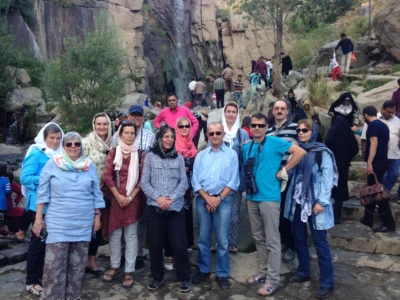


Shiraz is a historic city in southwestern Iran, specifically in the province of Fars. Geographically, it lies at the foot of the Zagros Mountains, which run along the western part of Iran. The city is on a fertile plain known as the Shiraz Valley, surrounded by mountains and hills. The coordinates of Shiraz are approximately 29.59°N latitude and 52.54°E longitude.
Shiraz enjoys a mild climate characterized by hot summers and relatively mild winters. The nearby mountains provide a natural barrier against extreme weather conditions, contributing to the city's pleasant climate. Shiraz's topography includes both flat plains and hilly areas, offering diverse landscapes and scenic views. The city is also known for its abundant gardens, orchards, and vineyards, which thrive in the region's fertile soil.
Shiraz has a rich historical heritage dating back thousands of years. It was once the capital of the Persian Empire during the Zand dynasty in the 18th century. The city flourished as a center of art, culture, and commerce, attracting scholars, poets, and merchants across the region. Shiraz is renowned for its contributions to Persian literature, with famous poets such as Hafez and Saadi calling the city their home.
Shiraz has numerous cultural landmarks and historical sites that reflect its illustrious past. One of the most famous attractions is the UNESCO World Heritage Site of Persepolis, located about 60 kilometers northeast of the city. Persepolis was the ceremonial capital of the Achaemenid Empire and is renowned for its magnificent ruins and ancient artifacts.
Other notable landmarks in Shiraz include the Arg of Karim Khan, a citadel built during the Zand dynasty; the Nasir al-Mulk Mosque, famous for its stunning stained glass windows; and the Tomb of Hafez, a mausoleum dedicated to the revered Persian poet.
The population of Shiraz has experienced steady growth over the years, fueled by factors such as urbanization, economic development, and migration from rural areas. According to the latest estimates, the population of Shiraz is approximately 2.5 million. However, this figure is subject to change due to ongoing demographic trends and migration patterns.
Shiraz is a cosmopolitan city with a diverse population comprising various ethnicities, including Persians, Kurds, Arabs, and Lurs. The city also attracts many foreign residents, including students, expatriates, and tourists, further enriching its cultural fabric.
Shiraz serves as an economic hub for the region, with a diverse economy driven by sectors such as agriculture, tourism, trade, and manufacturing. The fertile plains surrounding the city support agricultural activities, including cultivating grapes, citrus fruits, and wheat. Shiraz is also known for its traditional handicrafts, including carpet weaving, pottery, and metalwork.
In recent years, tourism has emerged as a major contributor to Shiraz's economy, with the city attracting millions of visitors annually. The tourism industry supports a wide range of businesses, including hotels, restaurants, transportation services, and souvenir shops, creating employment opportunities and driving economic growth.
While Shiraz offers many opportunities for growth and development, it also faces several challenges, including urbanization, traffic congestion, and environmental degradation. The city's rapid expansion has led to strains on infrastructure and public services, necessitating investment in urban planning and development.
Additionally, preserving Shiraz's cultural heritage and natural beauty while accommodating the needs of a growing population remains a priority for city planners and policymakers. Sustainable development initiatives aimed at balancing economic growth with environmental conservation are essential for ensuring Shiraz's long-term prosperity and livability.
In conclusion, Shiraz is a vibrant and historic city in the heart of Iran's Fars province. With its rich cultural heritage, diverse population, and strategic location, Shiraz continues to be a dynamic center of commerce, culture, and tourism in the region. By addressing the challenges and seizing the opportunities presented by its growth, Shiraz can continue to thrive as a leading destination for residents and visitors alike.
| Languages spoken | Persian/ Shirazi dialect |
|---|---|
| Currency used | Iranian Rials |
| Country name | Iran |
Shiraz, located in the southwestern region of Iran, is steeped in history, culture, and natural beauty. Renowned as the heartland of Persian civilization, Shiraz has long been celebrated as a center of poetry, art, and scholarship.
**Historical Significance**:
Shiraz boasts a rich historical heritage dating back thousands of years. It served as the capital of the Persian Empire during the Zand dynasty in the 18th century, leaving behind architectural marvels such as the imposing Karim Khan Citadel, which stands as a testament to its former glory. The city's historical sites, including Persepolis and Pasargadae, offer glimpses into its ancient past and the grandeur of Persian civilization.
**Cultural Center**:
Shiraz is synonymous with Persian poetry, having been home to some of the greatest poets in Iranian history. The tomb of Hafez, one of the most revered Persian poets, is a revered pilgrimage site where visitors pay homage to his enduring legacy. The tranquil gardens of Eram and Narenjestan showcase the city's love for aesthetic beauty and serve as havens of tranquility amidst the urban bustle.
**Architectural Splendor**:
The architectural landscape of Shiraz is characterized by a blend of Islamic, Persian, and Zand-era influences. The Nasir al-Mulk Mosque, also known as the "Pink Mosque," captivates visitors with its stunning stained glass windows that cast a kaleidoscope of colors across its interior. The Vakil Mosque and Vakil Bazaar exemplify the city's architectural prowess and serve as vibrant hubs of activity where locals and tourists converge to shop, socialize, and soak in the atmosphere.
**Gastronomic Delights**:
Shiraz delights the senses with its rich culinary tradition, offering a tempting array of flavors and aromas. The city's cuisine reflects its diverse cultural influences and agricultural abundance, from succulent kebabs and aromatic rice dishes to fragrant saffron-infused delicacies. Visitors can savor the flavors of Shirazi cuisine at traditional restaurants and street food stalls, where hospitality and warmth are as abundant as the food.
**Natural Beauty**:
Surrounded by verdant gardens, orchards, and vineyards, Shiraz is a haven for nature lovers and outdoor enthusiasts. The nearby Shiraz Mountains offer hiking, trekking, and sightseeing opportunities, allowing visitors to immerse themselves in the region's breathtaking landscapes and panoramic vistas. The city's mild climate and picturesque surroundings make it an ideal destination for leisurely strolls and outdoor adventures.
**Hospitality and Warmth**:
Above all, Shiraz is renowned for the hospitality and warmth of its people. Visitors are welcomed with open arms and treated to the genuine hospitality for which Iran is famous. Whether sipping tea in a traditional teahouse, bargaining at the bazaar or sharing a meal with locals, visitors to Shiraz are sure to be touched by the kindness and generosity of its inhabitants.
In essence, Shiraz captivates visitors with its blend of history, culture, and natural beauty, offering a truly unforgettable experience that lingers in the hearts and minds of all who visit.
Shiraz and its suburbs boast a wealth of essential attractions, ranging from historic sites to natural wonders. Here are some of the must-visit destinations in Shiraz and its surrounding areas:
1. **Persepolis **: Persepolis, also known as Takht-e Jamshid, is an ancient archaeological site near Shiraz(60 km). It was once the ceremonial capital of the Achaemenid Empire and is now recognized as a UNESCO World Heritage Site. Persepolis holds great historical significance and is one of the most impressive and well-preserved ancient sites in the world.
2. **Nasir al-Mulk Mosque**: Also known as the Pink Mosque, Nasir al-Mulk Mosque is a masterpiece of Persian Islamic architecture located in the heart of Shiraz. ThMosqueue is famous for its stunning stained glass windows, intricate tilework, and colorful floral patterns, creating a mesmerizing play of light and shadow inside the prayer hall. ThMosqueue is a testament to Iran's rich artistic and architectural heritage. Its intricate design, vibrant colors, and spiritual ambiance make it a must-visit destination for tourists and pilgrims alike. It offers a glimpse into the beauty and majesty of Islamic art and culture.
3. **Eram Garden**: Situated in the northern part of Shiraz, Eram Garden is a historic Persian garden known for its lush greenery, fragrant flowers, and beautiful fountains. The garden dates back to the 13th century and features a stunning Qajar-era pavilion adorned with intricate tilework and mirrored mosaics.
4. **Tomb of Hafez**: The Tomb of Hafez is a mausoleum dedicated to the renowned Persian poet Hafez, who lived in Shiraz during the 14th century. ThTombmb is located in a tranquil garden setting and is a popular spot for locals and visitors to pay their respects, recite poetry, and seek inspiration.
5. **Tomb of Saadi**: Saadi, another famous literary figure from Shiraz, is honored with a mausoleum in the city's suburbs. Beautiful gardens surround thTombmb, which features a marble tombstone inscribed with verses from his poetry.
6. **Arg of Karim Khan**: Built during the Zand dynasty in the 18th century, the Arg of Karim Khan is a fortified citadel located in the center of Shiraz. The citadel served as Karim Khan's residence and features impressive architectural elements, including brick walls, circular towers, and decorative tilework.
7. **Shah Cheragh Shrine**: This holy shrine is one of Iran's most important pilgrimage sites and is dedicated to two brothers revered as martyrs. The shrine's interior is adorned with intricate mirrorwork, glass, and tilework, creating a dazzling display of light and color.
8. **Qalat Village**: Located in the mountains northeast of Shiraz, Qalat Village is renowned for its picturesque scenery, traditional architecture, and cool climate. Visitors can explore the village's narrow alleys, ancient mosques, and historic houses while enjoying stunning views of the surrounding mountains.
9. **Pasargadae **: This tourist attraction is an ancient archaeological site in Iran, approximately 130 kilometers northeast of Shiraz. It holds great historical significance as it was once the capital of the Achaemenid Empire under the rule of Cyrus the Great. The site is renowned for its well-preserved ruins and is recognized as a UNESCO World Heritage Site. Pasargadae stands as a testament to the greatness of the Achaemenid Empire and the enduring legacy of Cyrus the Great.
These are just a few of the many attractions Shiraz and its suburbs offer. Whether you're interested in history, culture, or natural beauty, there's something for everyone to explore and enjoy in this vibrant city and its surroundings.

Our 15-day trip takes you across a plethora of ancient historical landmarks, a top choice for adventure travelers.

Our 16-day trip takes you across many ancient historical landmarks and stunning landscapes, making it the top choice for adventure travelers.
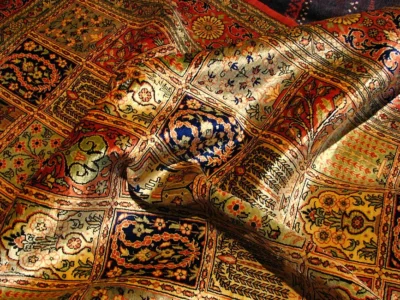
Our 8-day cultural and adventure tour takes in many of Persia's iconic highlights while uncovering different insights into the Persian lifestyle.
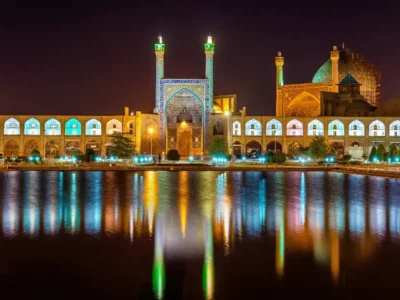
Iran, once Persia, stands at the crossroads of time with a 7,000-year history, making it one of Earth's most captivating cultures.
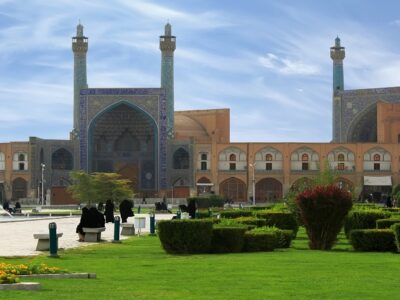
This seven-day trip is ideal for travelers who are short on time but wish to discover iconic landmarks of Ancient Persia.

Our 14-day itinerary is designed for those who wish to step back in time and feel the imperial grandeur of the ancient Persians.
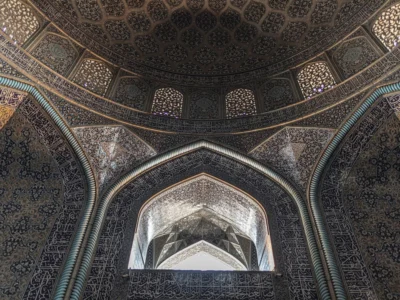
Our 14-day itinerary is designed for those who wish to step back in time and feel the imperial grandeur of the ancient Persians.
Unfortunately no accommodations were found.
A small river named Duden flows by their place and supplies it with the necessary regelialia. It is a paradisematic country, in which roasted parts of sentences fly into your mouth. Even the all-powerful Pointing has no control about the blind texts it is an almost unorthographic life One day however a small line of blind text by the name of Lorem Ipsum decided to leave for the far World of Grammar.
Take advantage of our exclusive travel deals and start planning your next journey right now. Our travel advisors are passionate about sharing their knowledge, offering an unforgettable experience on a small group journey to explore Persia.
Travel Deals
Copyright © 2024 Viantours, All rights reserved.
